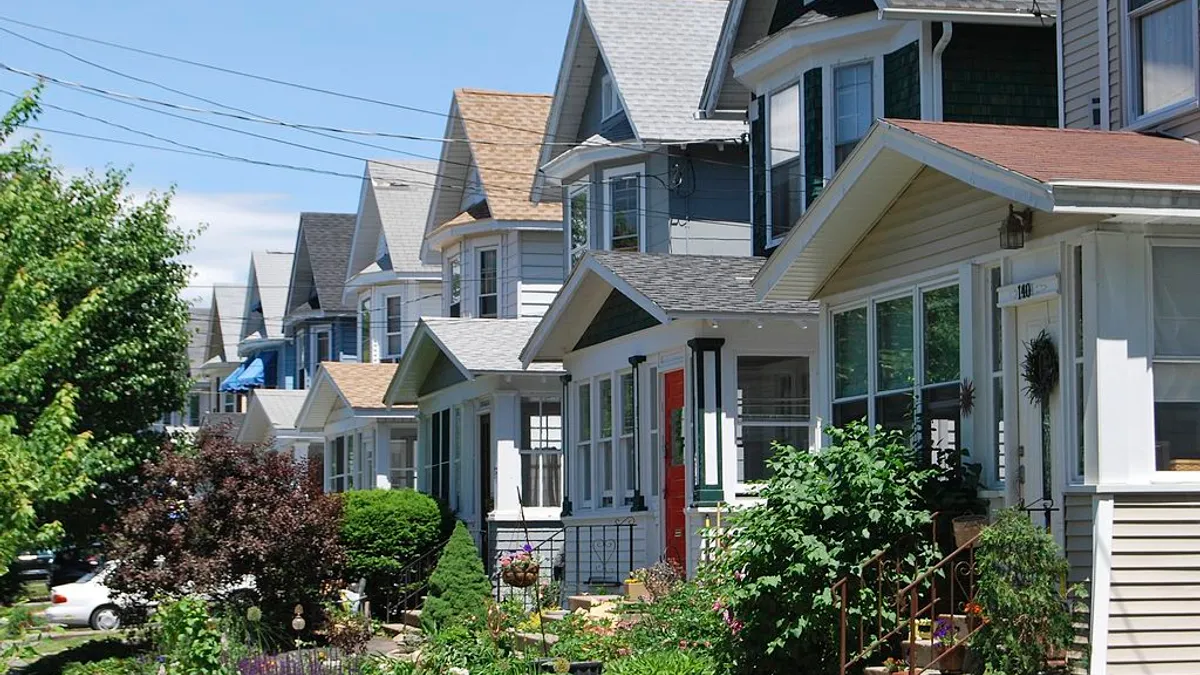Dive Brief:
-
The U.S. housing market was running at 98% of normal economic activity during the third quarter, according to the National Association of Home Builders/First American Leading Markets Index, which is based on current employment, price and permit data. That’s up from 97% in the second quarter and 93% a year ago. The LMI recorded its lowest levels of economic activity in 2012.
-
Markets in 162 of the roughly 340 metropolitan areas saw improvement or consistency in economic and housing activity in the third quarter, while 73 markets posted a year-over-year net increase.
-
Baton Rouge, LA; Austin, TX; Honolulu; San Jose, CA; and Provo, UT led the LMI during the period. Smaller metros including Odessa and Midland, TX; Walla Walla, WA; and Manhattan, KS, doubled their economic activity since the recession.
Dive Insight:
The LMI continues to track the housing market’s recovery from the recession at the market level, as it tracks metros that are nearing or surpassing their typical levels of economic activity. The third-quarter gains were propelled by continued job growth, coupled with increasing wages, as well as low mortgage rates, NAHB Chairman Ed Brady said in a statement.
Housing prices were at or beyond typical levels in 97% of markets during the third quarter, as tight inventory conditions make buying an increasingly competitive proposition. Employment activity was at or above historically normal levels in 92 metros of the 340 tracked by the LMI during the period. Meanwhile, single-family permits are running at slightly more than half (51%) of typical activity for the sector.
Forecasts for the housing market in the near term are largely optimistic, if hedged against climbing home prices and limited inventory. A good start to an overall loosening of inventory and softening of prices is a rise in existing home sales, suggesting that many of those homeowners are trading up to new properties and opening more inventory for first-time buyers.
The National Association of Realtors expects a "slight increase" in sales of previously owned homes in 2017, following this year, which is forecast to tie 2006’s record high. In its 2016 Profile of Home Buyers and Sellers, the NAR called out first-time buyers, in addition to single women, for their renewed homebuying activity, taking a 35% share of sales in 2015, up from recent years but off their pre-recession 40% stake.
Meanwhile, more younger buyers are trickling into the market. Individuals under the age of 35 accounted for 35.2% of homeowners during the third quarter, up only slightly from the first (34.2%) and second (34.1%) quarters, according to the U.S. Census Bureau.
For more housing news, sign up for our daily residential construction newsletter.














